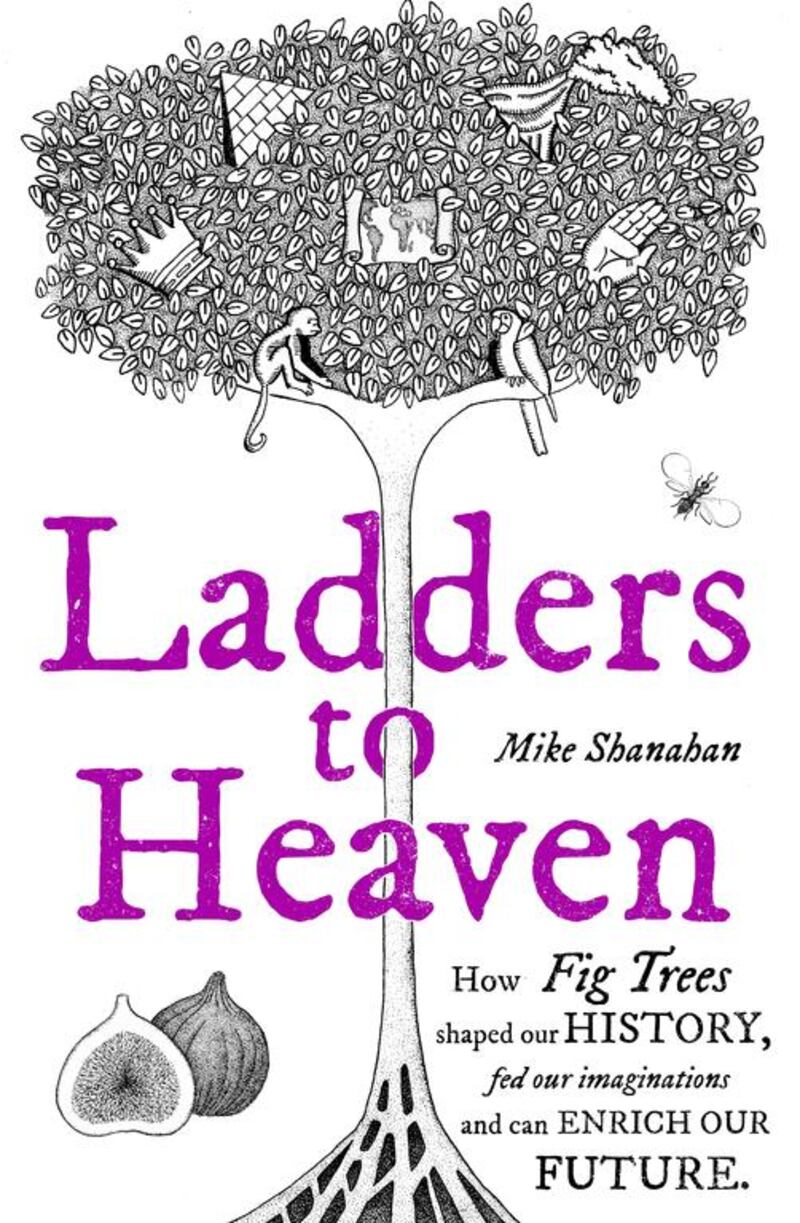The fig tree stands at the heart of creation. This centrality can be observed most readily, and certainly most famously, in each of the world’s great monotheisms. In Islam, in Judaism, in Christianity, the fig tree lies at the root of the story of the forging of humanity, and of the subsequent development of human evil: when Allah swears “By the fig and the olive” at the opening of the 95th Surah, often known as the Surah At-Tin, a distinction is introduced between man “created in the best of stature” – “those who believe and do righteous deeds” and will be met with “reward uninterrupted” – and those whose malevolence will deliver them to judgement.
As Mike Shanahan says in his stimulating new book, Ladders to Heaven, for the world's three major religions it is with the fig tree that "all of our promise and our problems began".
Given this duality, whereby the fig tree functions at once as a source of human probity and as a kind of radix malorum, one might expect a history of the significance of the species to carry an appropriately ambivalent title: Ladders to Heaven, Stairways to Hell, perhaps. But in fact Shanahan's decision to focus on the positive aspects of his subject turns out to be fitting: his objective in this book is to look beyond the religious significance of the fig tree and chronicle the various ways in which his own interest in the species has transported him to a different kind of paradise. It is a transportation – or, to use his inadvertently resonant term, a "fall" – he hopes we will share too.
Shanahan’s “obsession” with the the fig tree took hold in 1998 in a Borneo rainforest, but the story of his tumble into the world of this plant’s strange and strangely alluring power has its roots, he tells us, in childhood.
His first encounter with fig trees arrived by way of a plant in his family home “that lived inside a plastic pot and inched its way toward whatever light it could find”. As the youngest member of the family it was Shanahan’s task to periodically clean the tree’s leaves, yet although these occasional encounters with the family’s domestic example of the species proved memorable (“As I stroked each dark green leaf with a duster so it shone, I couldn’t fail to notice the table that stood upright like a tombstone in the soil”), it was a larger fruit-producing tree in his neighbour’s garden that sowed the seeds of his lifelong infatuation. Over to Shanahan:
“In time fig trees would show me the world through different eyes and different taste buds – those of diverse cultures from the present day and the distant past, as well as those of birds and bats, monkeys and much stranger beasts. This germination began in 1994 at the University of Leeds, in a lecture by biologist Steve Compton. He would later list his research interests on the university website as including ‘Anything to do with fig trees and fig-wasps’. I had never heard of a fig-wasp. Steve changed my life when he taught me their story.”
In relaying the tale of his subsequent relationship with the fig tree, Shanahan hopes to engender in his readers something akin to the moment of epiphany that was offered to him as a student in 1994. While he does not always meet this aspiration, the pages of his book are frequently awakening. They show how fig trees inspired the scholarship of Arthur Russel Wallace (Darwin’s co-founder of the theory of evolution); feature in the creation myths of an array of cultures and religions; shaped the history of continents and the outcome of wars (Alexander the Great once sheltered thousands of soldiers under a fig tree in India); spun the delicate threads on which whole eco-systems depend; played fundamental roles in the story of medicine; and might offer us lessons about securing the future of the planet.
Along the way we encounter a lot of interesting detail. We learn (repeatedly) that there are more than 750 species of fig trees and that biologists are still discovering more; that the world’s oldest living tree (“with a known year of planting”) is a species of fig (Ficus religiosa) planted in Anuradhapura, Sri Lanka; that the Bollywood superstar and former Miss World champion, Aishwarya Rai, once married a fig tree in order to secure an untroubled future for the life she planned with her human love; that the two-millimetre seed of the banyan tree is capable of producing a tree “vast enough to resemble a small forest”; that the female fig-wasp, whose life lasts 48 hours, who never eats and has wings thinner than a human hair, carries out acts of pollination on which the lives of innumerable species depend.
These moments of Shanahan’s story – and there are many – are immensely rewarding. But you find yourself looking for them with a sense of desperation: there is little to offer the same kind of pleasure in the connecting strands of Shanahan’s narrative, which are often vague, directionless, inattentive; the book is a forest of clichés.
Without these shortcomings, Ladders of Heaven might have been a work of great sustenance, inspiration and nutrition. In its present state it feels more like a hastily assembled wood in which you are condemned to wander, never quite giving up hope, searching for the choicest fruit.
Matthew Adams lives in London and writes for the TLS, The Spectator and the Literary Review.










